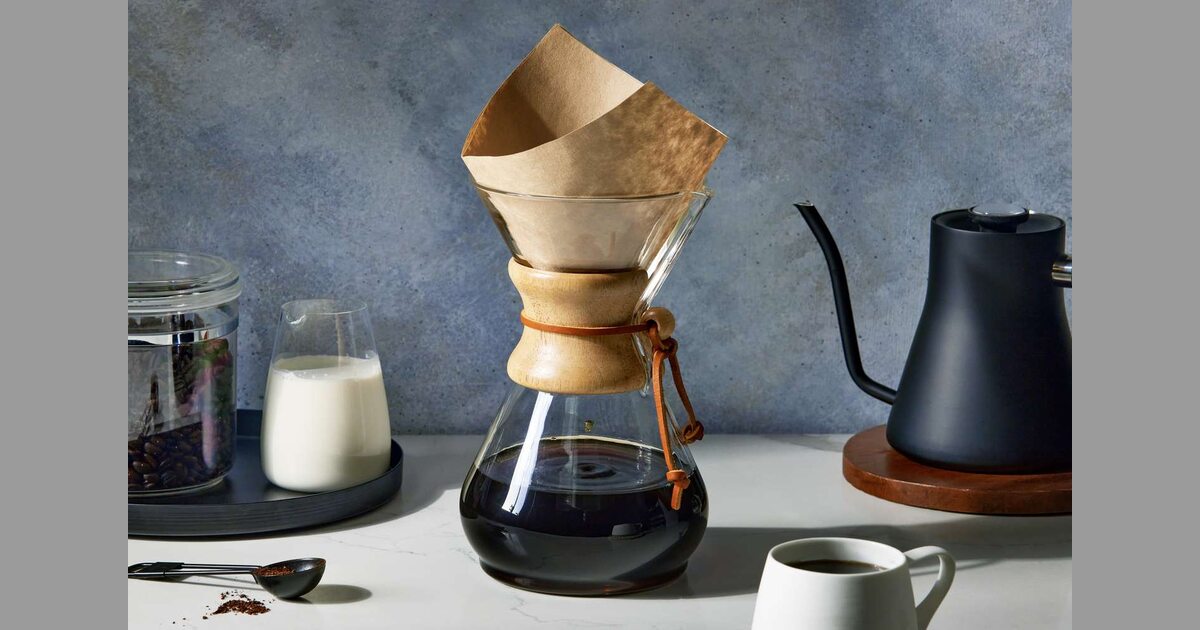Pour-over coffee is the favored choice among coffee aficionados for its ability to deliver a well-balanced and dimensional flavor profile when executed correctly.
According to Scott Price, head of roasting and production at Mud Coffee, the key to pour-over perfection lies in factors like the proper grind size, water temperature, and saturation.
This method optimally extracts the proteins and lipids responsible for the coffee’s delightful taste without risking overextraction or astringency due to its ideal contact time with the grounds.
Pour-over coffee, often referred to as “drip” coffee, involves pouring water over ground coffee beans from above, allowing gravity to guide it through the grounds, typically using a paper filter, and into a carafe.
This manual process, when executed skillfully, provides greater control over the brewing process compared to automated machines, resulting in superior brews.
To make the perfect cup of pour-over coffee, experts emphasize the following steps:
- Prepare Hot Water: Heat water to around 195-208°F (90-97°C). An electric kettle with temperature control is recommended for accuracy.
- Fresh Coffee Beans: Grind fresh coffee beans just before brewing, preferably with a burr grinder. Use a 1:16 coffee-to-water ratio as a starting point.
- Filter Prep: Place a paper filter in your pour-over brewer. Some recommend wetting the filter with hot water, while others skip this step.
- Add Grounds: Measure and add the coffee grounds to the filter. Ensure an even bed of grounds in the brewer.
- Bloom Phase: Pour a small amount of hot water (about 3 times the weight of your grounds) over the coffee, allowing it to bloom for 30-45 seconds. This releases trapped gases from roasting.
- Gradual Pouring: Slowly and evenly pour hot water over the coffee in a series of pours. The exact method varies:
- Some experts advocate continuous pouring until reaching the target weight.
- Others prefer multiple pours, with a brief pause between each pour.
- Maintain the water-to-grounds ratio and aim for a total brew time of around 3:30 to 4:00 minutes.
- Enjoy: Once the coffee has fully dripped through, discard the grounds and filter, rinse the brewer, and savor your perfect cup of pour-over coffee.
Experts recommend experimenting with different grind sizes and pour techniques to fine-tune your brew. If the coffee tastes bitter, try a coarser grind; if it’s sour, go for a finer grind. Adjust the amount of water for desired strength.
Remember that making pour-over coffee is not just about following a strict recipe; it’s also about enjoying the process and finding what works best for your taste buds. Don’t be afraid to experiment and have fun with your pour-over coffee routine.








Leave a Reply
You must be logged in to post a comment.